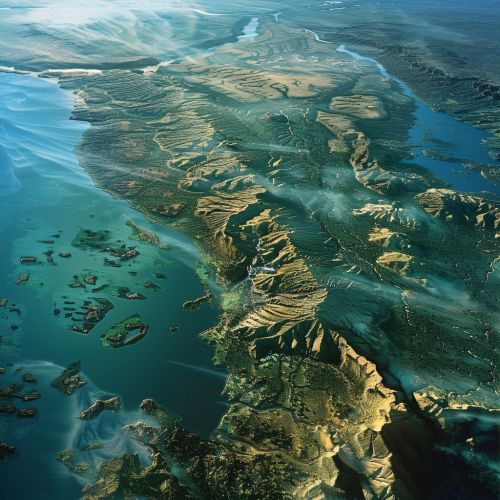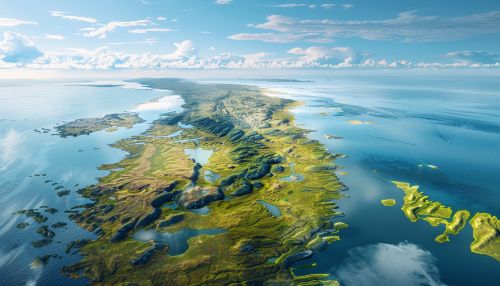Pangaea
Introduction
Pangaea or Pangea was a supercontinent that existed during the late Paleozoic and early Mesozoic eras. It assembled from earlier continental units approximately 335 million years ago, and it began to break apart about 175 million years ago. In contrast to the present Earth and its distribution of continental mass, Pangaea was centred on the Equator and surrounded by the superocean Panthalassa. Pangaea is the most recent supercontinent to have existed and the first to be reconstructed by geologists.


Formation
The formation of Pangaea was a result of the process known as plate tectonics. This is a theory in geology that explains the movement of the Earth's lithosphere, which is broken up into a number of tectonic plates. Over the scale of geologic time, these plates are in constant motion driven by the Earth's internal heat energy. The movement of these plates led to the assembly of the supercontinent Pangaea.
Appearance and Geography
Pangaea was a C-shaped continent with its mouth opening towards the west. The east side of the C was the Tethyan orogeny, a mountain range higher than the Himalayas that ran along the southern edge of Eurasia. The west side of the C was the Panthalassic orogeny, a similar mountain range that ran along the western edge of Pangaea. The interior of Pangaea was a vast desert with extreme temperatures.
Climate
The climate of Pangaea is difficult to determine due to the vast time scales involved, but it is believed to have been relatively uniform due to the central location of the landmass. The interior regions were likely arid, with little to no rainfall. The coastal regions would have been more temperate, with a climate similar to that of the present-day Mediterranean.
Flora and Fauna
The flora and fauna of Pangaea were diverse and varied, reflecting the wide range of climates and habitats available on the supercontinent. The central desert regions were likely dominated by xerophytic plants and reptiles, while the coastal regions would have supported a wider range of plant and animal life.
Breakup
The breakup of Pangaea began in the early Mesozoic Era, around 200 million years ago. This was a result of the same tectonic forces that had created the supercontinent. As the plates moved, they began to pull apart, creating rifts and fissures that eventually split the landmass into the continents we know today.
Legacy
The legacy of Pangaea is still visible today in the form of the continents and ocean basins. The shapes and positions of these landmasses are a direct result of the breakup of the supercontinent. Additionally, the distribution of flora and fauna across the globe can be traced back to the time of Pangaea, with many species showing clear evidence of a common ancestry.
